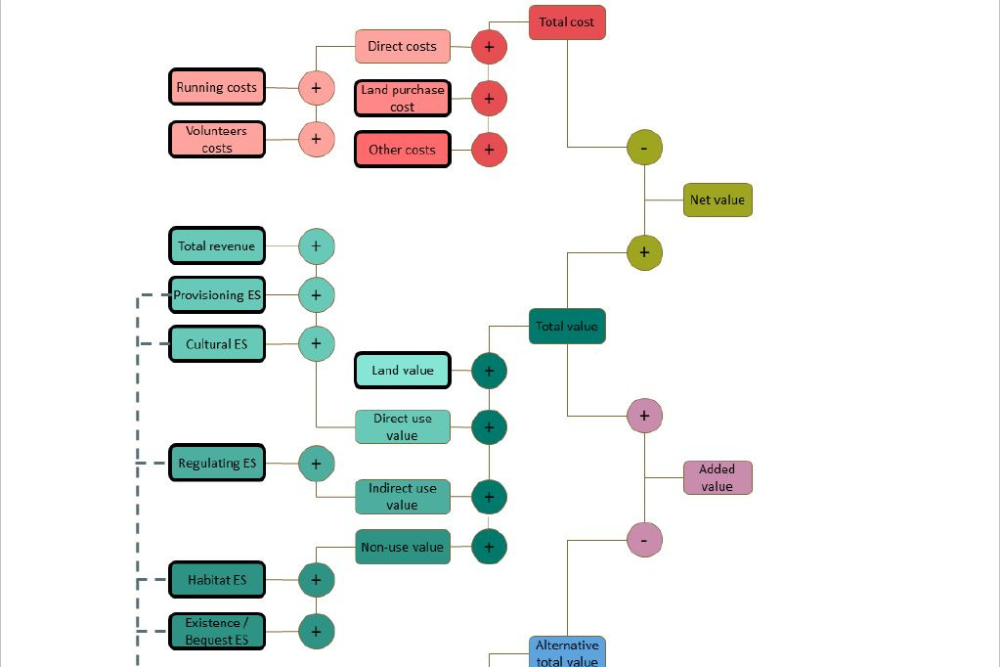- March 25, 2024
Description
One of the Impact Projects in the field of environmental sustainability that won a funding grant from the Innovation and Sustainability Division is A Cost-Benefit Analysis of Private Land Conservation: Measuring the economic cost and worth of TiME sites. On March 17, 2024 the first detailed report of the work done was issued and here are its major findings:
Acquiring private lands to preserve them as Private Land Conservation (PLC) sites significantly contributes to global biodiversity conservation efforts. The monetary value of Ecosystem Services (ES) and other values provided by PLC sites for various beneficiary groups, is crucial for assessing their overall impact and effectiveness. However, a priori quantifying ES monetary value is often impractical due to time and cost constraints faced by PLC initiatives. To address this challenge, we propose a simple method that integrates an extensive ES valuation database with local socio-ecological knowledge of PLC sites. Applying this method to five PLC sites involved in This is My Earth (TiME) land acquisition, we estimated total costs, total values, and alternative total values over a century. Our findings reveal that when considering ES monetary values, the total value per hectare was on average 213 times greater than the total cost. Similarly, the mean benefit per unit area to the local community (the direct usage value) over a 100-year period was 54.39 times greater than the cost per unit area. Thus, we concluded that the total value of TiME’s PLC sites significantly exceeds acquisition and operational costs, highlighting PLC as an economically efficient conservation strategy, both globally and for the local community. We further discuss avenues for enhancing the reliability of our protocol and how such information can support PLC decision-making processes and community engagement efforts.
Team members
- Dr. Yoni Gavish: Data ; Science ; Environment – Statistical and Ecological solutions. 24 Netta St. Pardes-Hanna Karkur, 3709017, IsraelDivision of Public Administration and Policy, School of Political Sciences, University of Haifa
- Department of Evolutionary and Environmental Biology, University of Haifa-Oranim
- Division of Innovation & Sustainability, University of Haifa



